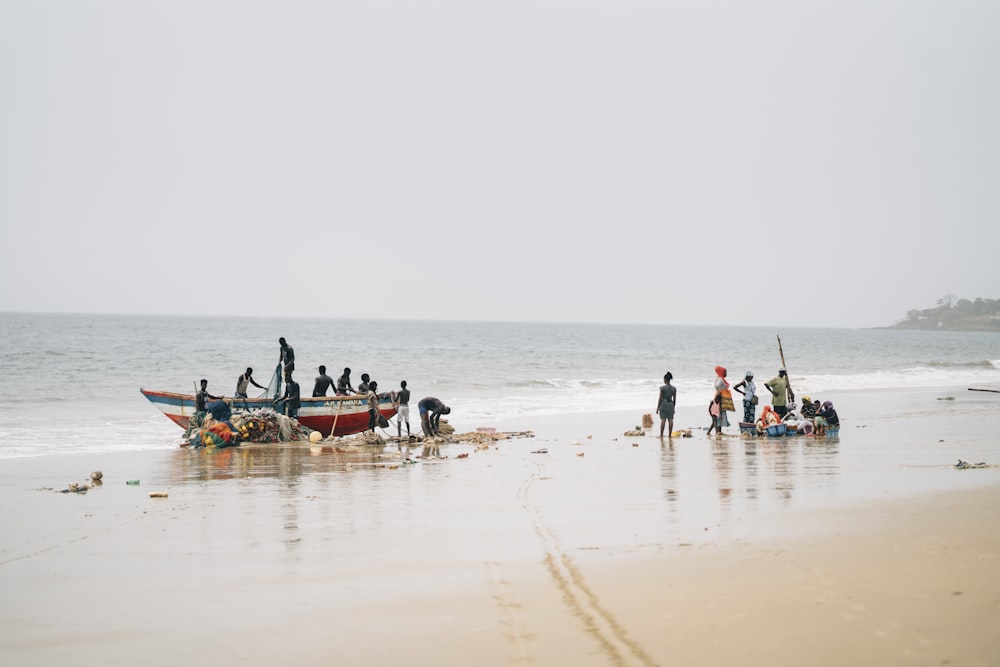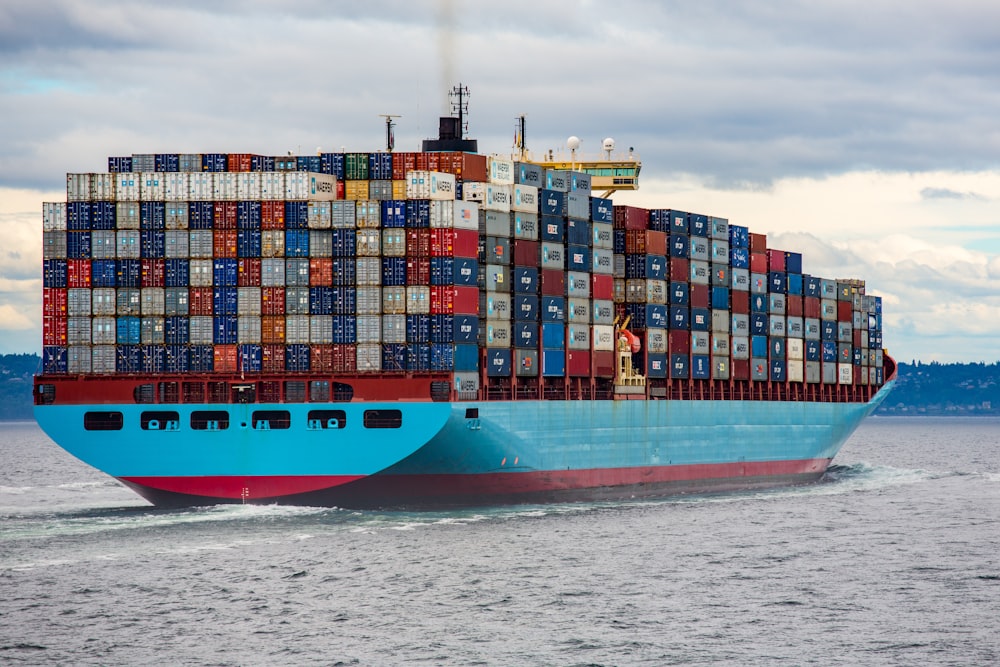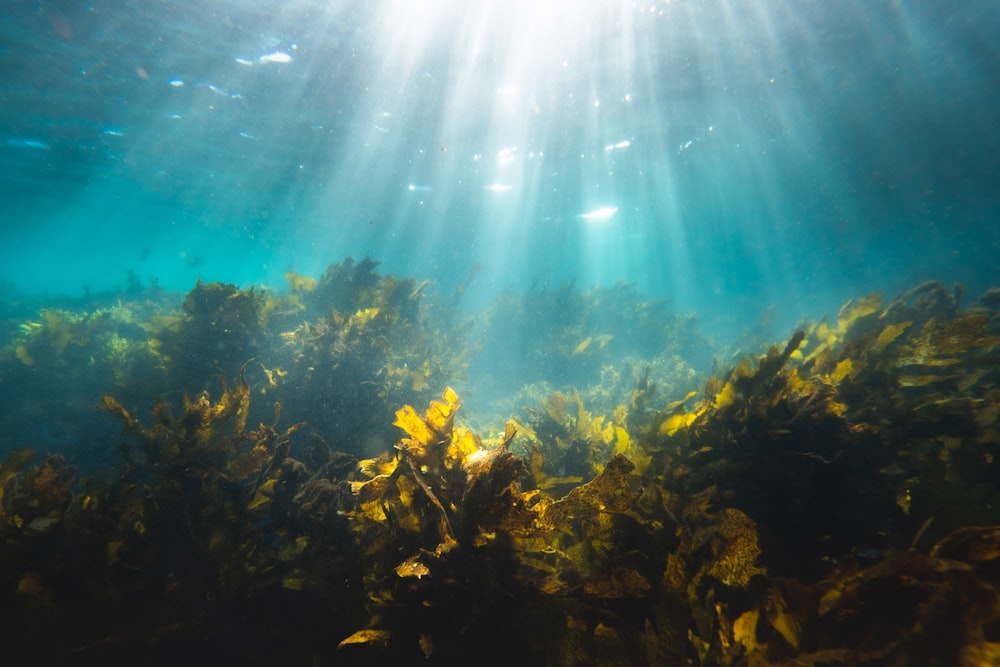The Future is Blue: Introduction to Africa's Blue economy
Context and Investment Insights - Exploring 9 Priority Areas for Climate Action
Hi all,
more than 70% of the world’s surface is covered by oceans. And they couldn’t be more important.
Did you know that 90% of excess heat has been stored in the ocean? I didn’t.
83% of the world's carbon cycle flows through the ocean. Blue carbon ecosystems store carbon when they are preserved, but release it when the are destroyed.
Moreover, fisheries and aquaculture assure the livelihood of more than 10% of the world’s population.
We know that healthy oceans are essential to climate change mitigation and adaptation.
Yet, ocean related investments are still a rather nascent market and receive little attention compared to other sectors - and relative to their importance.
So today, let’s give them the attention they deserve:
#8: Building a climate-resilient Blue Economy
🕐 In a Hurry? Here's a 1-Minute Summary:
Growth of the Blue Economy: Africa's Blue Economy sectors are rapidly growing, with a projection to generate $405 billion and create 57 million jobs by 2030. Key sectors like tourism and ocean mining are driving this growth.
Environmental Challenges: The sector faces significant challenges from climate change, pollution, overexploitation, and governance issues, impacting aquatic systems, food production, and marine ecosystems.
Notable Initiatives: Initiatives like the UN High Seas Treaty, Mangrove Blue Carbon Pilot Program, and the PROBLUE Fund are underway to promote sustainable practices, protect marine biodiversity, and boost investment in the blue economy.
Investment Opportunities: Growing investor interest in sustainable aquaculture, renewable ocean energy, and technology-driven solutions like AI and blockchain for fish stock monitoring and supply chain tracing.
Spotlight: Seaweed Production Potential: Seaweed farming presents a great opportunity for sustainable development, with potential growth to $11.8 billion by 2030 in various applications, from food to bioplastics, but requires innovative financing and risk management.
⏳ Ready for a Deeper Dive? Here's the Breakdown:
Context: Key facts and figures
(1) Situation: Dynamic, rapidly growing sector
The African Blue Economy sectors are significantly contributing to the continent's economic growth, food production and job creation.
As of now, these sectors generate a value of USD 296 billion and provide 49 million jobs. By 2030, it's projected to increase to USD 405 billion in value and 57 million jobs, and by 2063, to USD 576 billion and 78 million jobs. This job growth will account for about 5% of Africa's active population in 2063.
Key sectors driving this growth include:
🏖️ Coastal tourism: Expected to generate over 100 billion in GDP and employ 28 million people by 2030, driven by continental tourism and eco-tourism development.
⛏️ Mineral Sector and Oil & Gas: Significant GDP growth expected, but little job creation. Potential to reach USD 100 billion by 2030.
⛏️ Ocean Mining: Huge potential with top sea-bed minerals (e.g., gold, cobalt, zinc) and seawater mining, with a combined value added of about USD 76 bn by 2030.
🌊 Blue Carbon and Ecosystem Services: Opportunity for coastal wetland projects to generate carbon credits, potentially reaching USD 45 bn in value added in 2030.
🎣 Fisheries: Stable contribution of approximately USD 21 bn to the African economy through 2063, little growth due to overfishing, overcapacity and poor governance.
🚢 Port and Shipping: African shipping is on the rise; Container port traffic set to exceed 2 billion tons by 2063, thanks to modernization and transport improvements.
🐟 Aquaculture: Rapid growth, with a total estimated value of USD 2.77 billion, concentrated in countries like Egypt and Nigeria.
🌊 Sustainable Blue Energy: Growing penetration in many countries incl. Ghana, Mauritius, and offshore wind projects; Estimated to reach USD 1.6 bn in 2030.
(2) Complications: Climate change, community pressures, pollution, overexploitation and governance
Climate Change: Climate change significantly impacts Africa's aquatic systems and food production. Rising sea temperatures, sea levels, and acidification disrupt fish migration patterns and affect local fisheries.
Coastal Communities: Climate change exacerbates pressures on coastal infrastructure and communities, leading to economic and social challenges. Coastal and lake communities in Africa are often marginalized with limited education and resource rights.
Pollution: Pollution, notably plastic waste dumped in rivers and oceans, poses a serious threat to marine life and ocean ecosystem health. This environmental issue impacts biodiversity and disrupts the balance of marine habitats.
Overexploitation: Advanced fishing technologies have enabled excessive resource extraction, leading to overexploitation of marine resources. This not only depletes fish stocks but also fuels conflicts over increasingly scarce resources.
Governance: Effective ocean governance is a complex challenge, hindering coordinated efforts to address issues like pollution and overexploitation. This governance complexity adds to the difficulties in managing marine resources sustainably.
(3) Solutions: Notable initiatives underway
UN High Seas Treaty: Targets to designate 30% of global seas as protected areas by 2030, ensuring marine conservation and sustainable use of ocean resources.
Mangrove Blue Carbon Pilot Program: Launched at COP 27, this initiative aims to boost financing for coastal and marine conservation in African regions, focusing on the crucial role of mangroves in carbon sequestration.
PROBLUE Fund: A multi-donor trust fund dedicated to bolstering Africa's blue economy. It emphasizes capacity building, knowledge enhancement, and mobilizing funds to attract more private investment into sustainable marine and coastal development.
Investment insights
(1) Market: Nascent space with untapped potential, but growing interest
There is a growing interest among both local and international investors in Africa’s blue economy.
This interest is driven by the recognition of the sector's potential to contribute to sustainable economic growth, job creation, and environmental conservation.
For example,
🌱 Innovations in sustainable aquaculture can meet growing food demands while reducing environmental impacts.
🌊 Renewable ocean energy, like tidal and wave energy, offers untapped potential for sustainable power generation.
💻 Technology-driven solutions, such as AI for monitoring fish stocks and blockchain for tracing seafood supply chains, are emerging investment areas.
Spotlight: Seaweed production
Africa has high potential to use their long coastlines for seaweed production, in a market which is currently dominated by China and Indonesia.
This poses a unique opportunity for sustainable development with the potential to alleviate poverty, mitigate climate change and enhance biodiversity - but much of its value remains untapped.
The Worldbank estimates the sector can grow to $11.8 bn by 2030 with seaweed applications such as biostimulants, animal feed, pet food, nutraceutical or even in fabrics, bioplastics and construction in the medium to long-term.
However, the blue economy is still a nascent space with a (perceived) lack of high quality, investible projects.
Investments involve high risk due to weak enabling conditions, so grant capital and innovative financing mechanisms are essential.
Such as for example, the world’s first sovereign blue bond issued by the Republic of Seychelles using debt for nature swaps.
(2) 5 Investment areas we’re excited about
Seaweed farming: Companies engaged in seaweed cultivation and processing including production of e.g., food products, biofuels or bioplastics.
Fish processing: SMEs that source from small-scale fisheries and add value to fish products through processing and packaging.
Sustainable fish farms/feed: Entrepreneurs focusing on sustainable aquacultures or the production of sustainable fish feeds.
Spotlight: For example, Tanzanian NovFeed produces sustainable fish feed relying on fermentation of organic waste. They release 80 % less CO2 compared to the production of traditional feed, their product is 30% cheaper and also better for the fish.
Waste management: SMEs that focus on ocean clean-up initiatives, waste management and recycling addressing plastic pollution.
Conservation: Companies promoting marine conservation (e.g., mangrove restoration) monetizing through carbon credits.
(3) Investors leading the way - selected examples
PROBLUE - Multi-donor fund for healthy oceans housed at the Worldbank
OceanHub Africa - pan-African accelerator for impact-driven startups in Africa protecting our oceans
Pangea Accelerator - leading African accelerator supporting amongst other sectors startup in the blue economy
Sources to learn more:
Africa Blue Economy Strategy by the African Union
Global Seaweed: New and Emerging Markets Report, 2023, Worldbank
Africa Aware: Securing the blue economy, a podcast by Chatham House
Enjoying out content?
Don’t keep it for yourself and share!
Subscribe to not miss future updates!
Feedback or thoughts?
Please let us know! Just reply to this e-mail. We’re happy to hear from you!
Thanks for reading,
Carolin
Disclaimer: All information provided is not intended to serve as investment advice. Any mention of industries or countries should not be taken as an endorsement.





